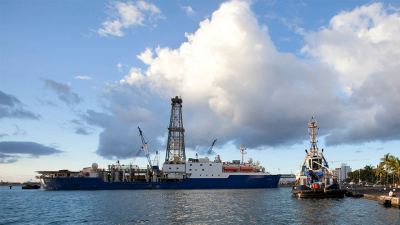- Home
- Discover
- Archive News
- News 2021
- Radiolysis
Microbes deep beneath seafloor survive on byproducts of radioactive process

With new analyses, a team of scientists led by the University of Rhode Island, Graduate School of Oceanography, has succeeded in quantifying radiolytic hydrogen production in marine sediments. The research shows that in the deep biosphere ancient microbes derive their energy from hydrogen and oxidants originating from radiolytic production and thus survive. In some cases, the hydrogen yield from radiolysis was twenty-seven times higher than in pure water. The results indicate that certain minerals in the marine sediment lead to this significant increase.
Dr. Chloe Anderson, a scientist from MARUM – Center for Marine Environmental Sciences at the University of Bremen is also involved in the study, which has now been published in the journal Nature Communications.
Original publication: Sauvage, J.F., Flinders, A., Spivack, A.J. et al. The contribution of water radiolysis to marine sedimentary life. Nat Commun 12, 1297 (2021). https://doi.org/10.1038/s41467-021-21218-z


